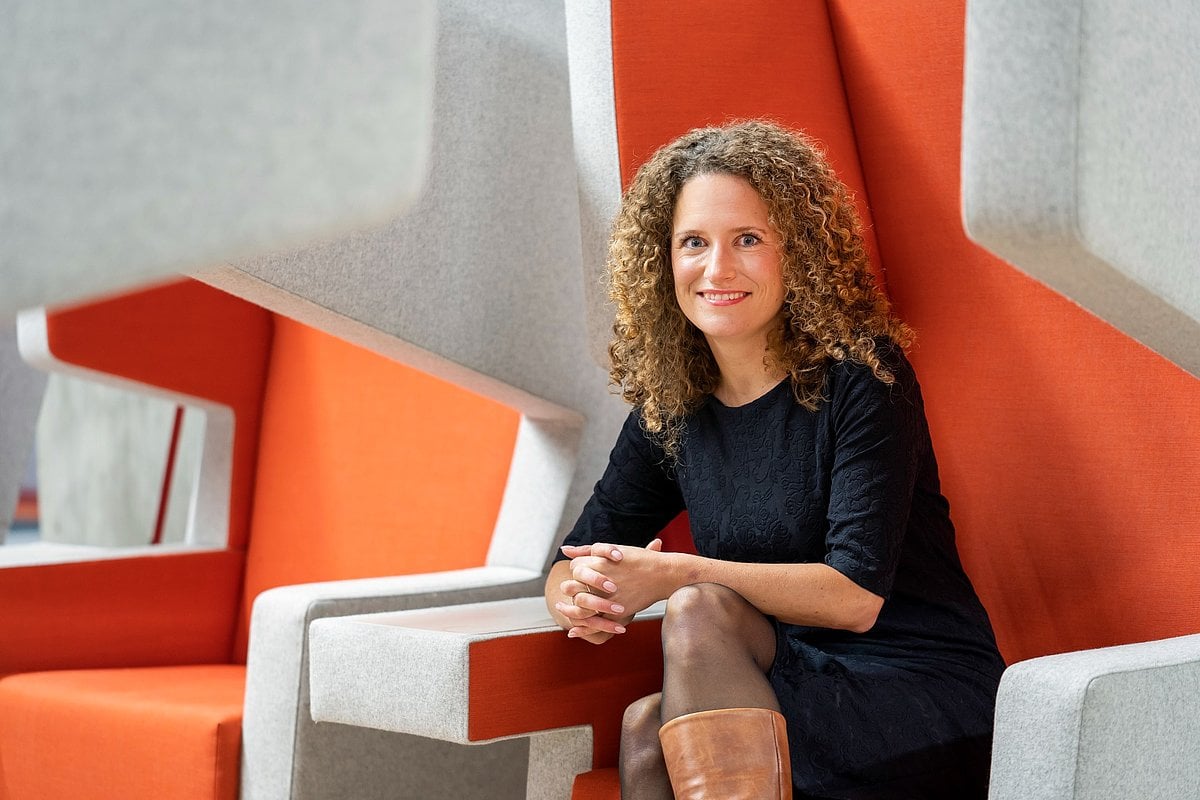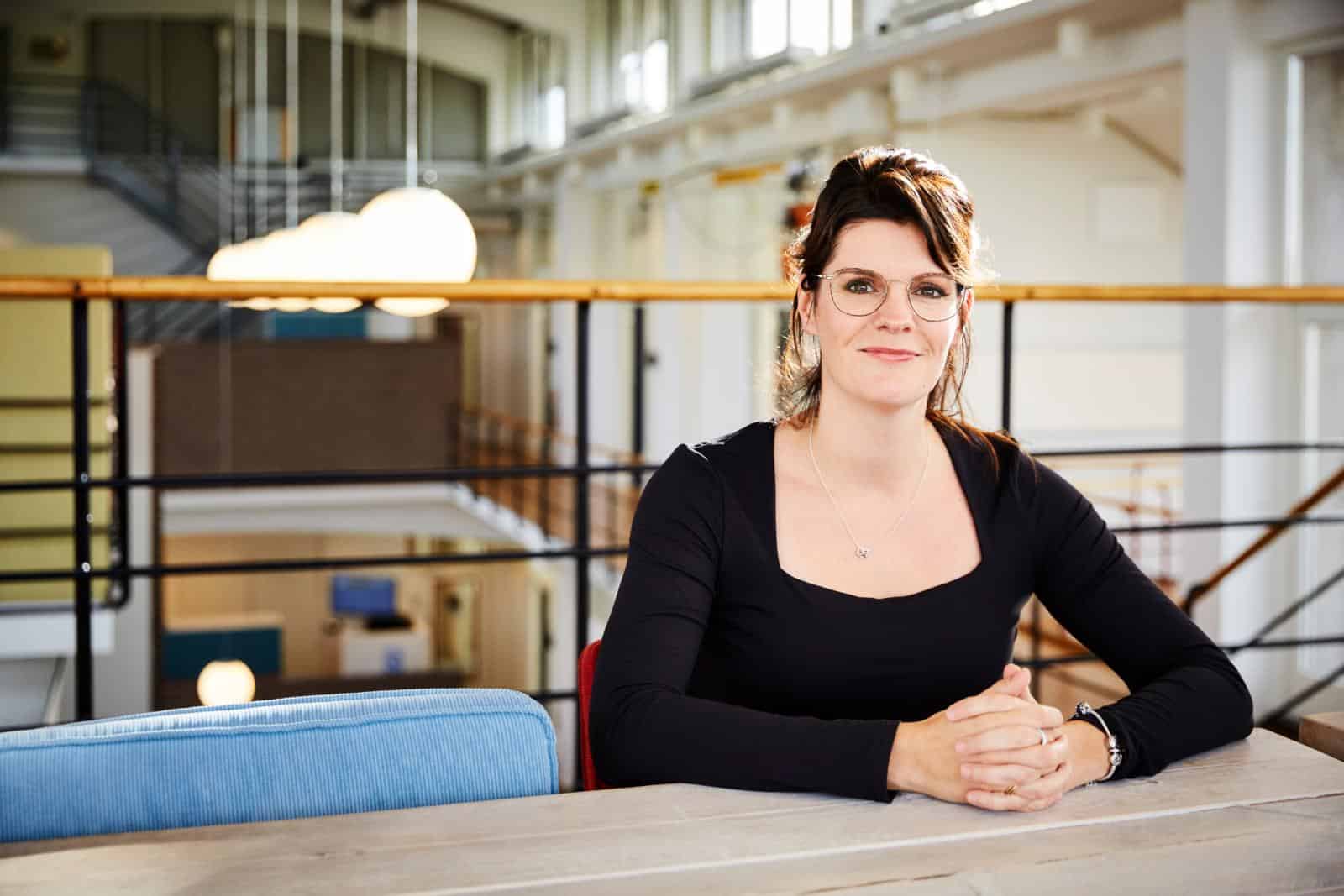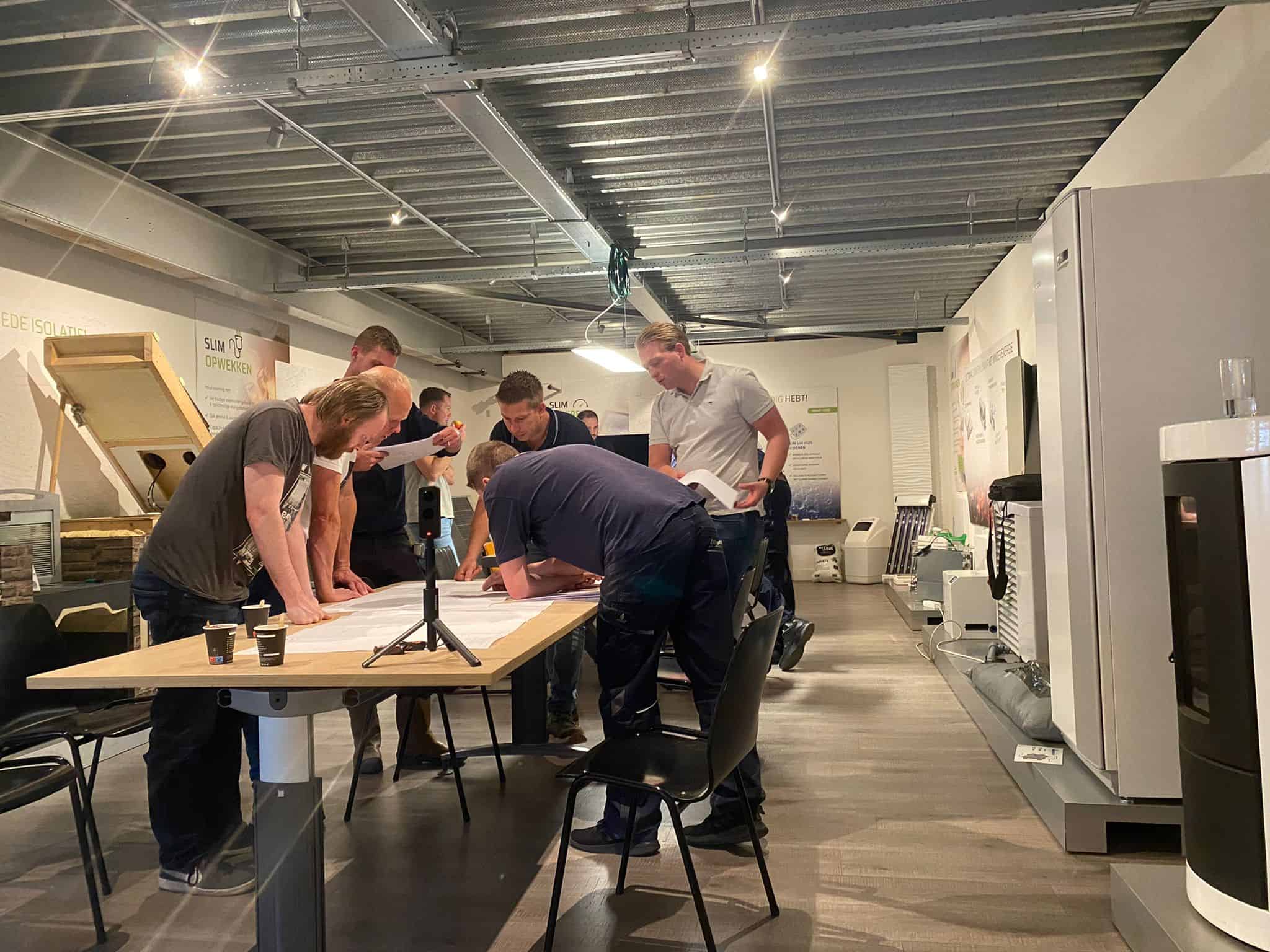
Havinga has one clear goal in mind: to accelerate and optimize the energy transition by helping housing corporations and private companies/individuals to make their houses more sustainable.
She wants to achieve this goal by using the ‘Rekenkern’ method: a system that comprises dynamic models and a supercomputer which can calculate billions of combinations of solutions, so that for every homeowner in the Netherlands a suitable, scientifically substantiated recommendation can be given for making their home more sustainable. “I want to make a real difference to the energy transition from a scientific perspective. After four years of effort, the Rekenkern method appears to be succeeding now.”
Unanswered questions
To say that Havinga is busy is an understatement. With her position as assistant professor of Building Performance at the TU/e and as a member of the Eindhoven Institute for Renewable Energy Storage (EIRES) management team, her schedule is jam-packed.
A great deal of work also needs to be done, because according to Havinga, the most important questions that people have when they choose to make their homes more sustainable are currently being left unanswered. These include questions such as: Will I still be able to heat my home well enough on a cold winter’s night if I’m connected to the new heat network or the new heat pump? And how about comfort levels in the summer? Or: What is the most economical solution from a financial point of view?
Simplified versions of reality
The mathematical models used by government, municipalities and consulting agencies are not capable of answering those questions. “Those models – on which energy labels, among other things, are based – assume, for example, the average monthly temperature, an average occupant and an average home. In other words, they are simplified versions of reality. As a result, homeowners often get disparate and contradictory advices when they want to renovate their houses.”
Havinga explains that dynamic aspects, such as the level of comfort, a healthy indoor climate and the load on the electricity grid, cannot be determined on the basis of monthly averages. “It is precisely the peaks that are important. An example: the average temperature in July is 18 ºC, but it can also occasionally be 35 ºC.”

With the Rekenkern method, Havinga has built a model that can answer all of these questions. The system takes all sorts of factors into account in calculations, such as the type of house, its characteristics, the composition of a family, the occupants’ behavior, the measures that are available to make such a house more sustainable, subsidies, and the total amount of CO2 emissions. It also takes comfort levels in summer and winter into account. “This is how we can make sure that you don’t over-insulate and then have to buy an air conditioner in the summer, or that you don’t insulate enough and end up feeling cold in the winter.”
Different requirements
The model can encompass a wide variety of different requirements and consequently calculate a range of optimizations. Someone who wants to keep CO2 emissions as low as possible can turn that particular dial. “Then you get a recommendation in which as much CO2 as possible is saved in a cost-effective way. If comfort is important to you, you can flip the comfort switch on, and the model will calculate a recommendation whereby a home meets higher comfort standards in both winter and summer.” Calculating different combinations of those performances – i.e., level of comfort, costs, CO2 emissions – are possible, too.
Sustainability as a side dish
The idea arose when Havinga started working for an architectural firm during and after her architecture studies at TU/e. She is disappointed with the way sustainability is currently being put into practice. “It’s often just a side dish, only one perspective is looked at, while sustainability is much more complex than that.”
This made her stop and think. Because, what essentially is true sustainability? And how can it be effectively measured? She decided to go back to science and started a PhD at TU/e, at the behest of the municipality of Amsterdam. During this period, she was involved in several meetings held by the national government as well as climate agreement negotiations. “I was amazed all over again. Everyone came along with their own Excel sheet and calculations. No one made an effort to understand the assumptions underneath those calculations nor did they attempt to find out the real truth.”
That’s what Havinga wants to change with the Rekenkern method by providing well-founded, scientifically substantiated advice. “Ultimately, I hope the model will not only be used by housing cooperatives, homeowners and the government, but also serves as a basis for construction companies, installers and consulting firms to improve their products and services.”
“I was amazed all over again. Everyone came along with their own Excel sheet and calculations. No one made an effort to understand the assumptions underneath those calculations nor did they attempt to find out the real truth.”
Lisanne Havinga
Currently, the Rekenkern method is being piloted in four neighborhoods. Thirty housing cooperatives have now also joined the project. The cooperatives have already tested the Rekenkern in sustainability projects and want to start using the models on a large scale as soon as possible. “There is still room for more cooperatives; the more that join us, the faster and greater the impact we can make.”
Changing sustainability around the world
What is Havinga’s dream? That her model will change the world of sustainability not only in the Netherlands, but also in Europe (and beyond). “I am incredibly concerned about climate change and find it appalling to see how the years are flying by, while the effects of climate change are getting worse and worse. By using the Rekenkern method to figure out the best option for a more sustainable home for every homeowner in the Netherlands, I hope we can encourage people to start doing exactly that. In addition to that, based on a large amount of data we generate with the Rekenkern, we can also analyse large-scale solutions that can be standardised.”







